How FPSO Inspection Prevents Million-Dollar Shutdown Losses
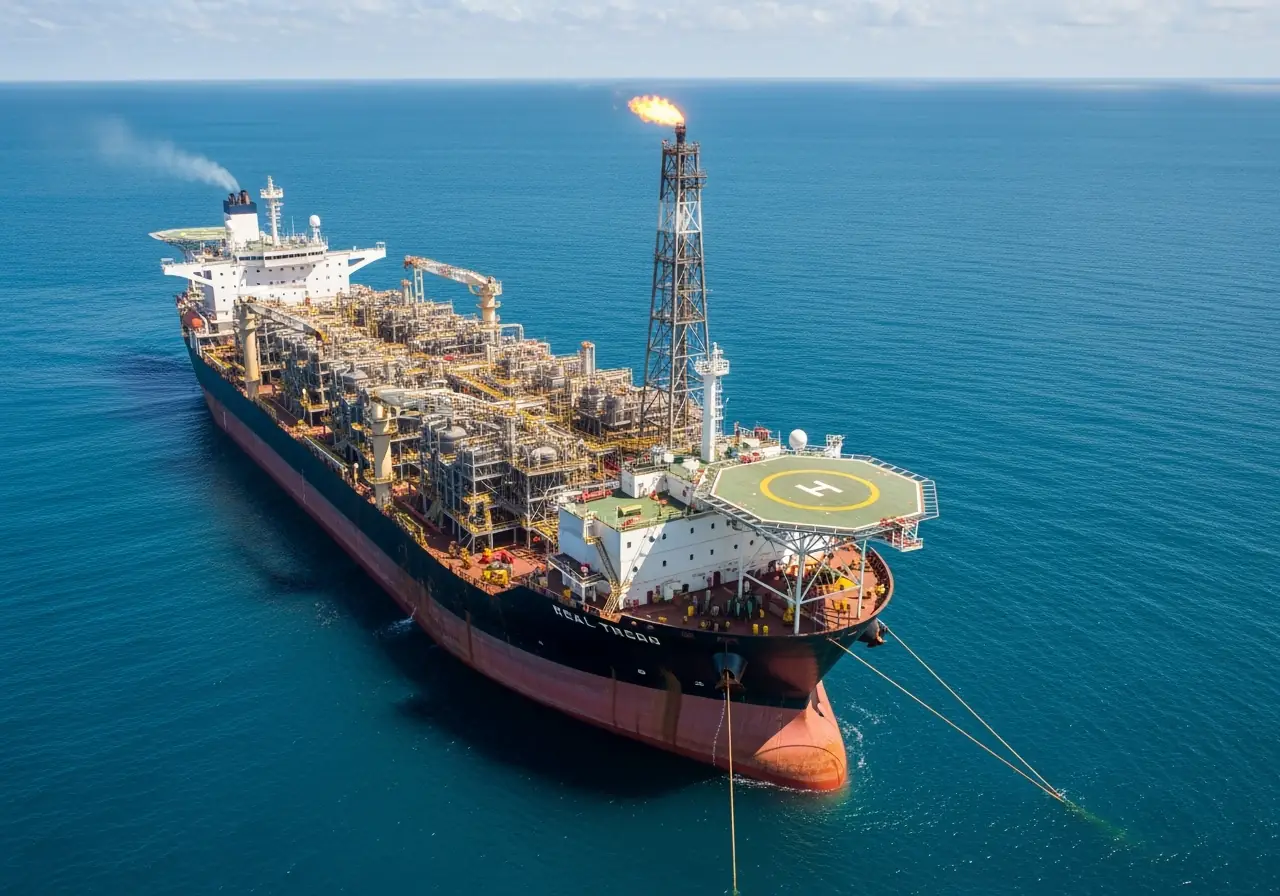
FPSO inspection is vital to prevent catastrophic financial losses and ensure offshore operational continuity. One FPSO faced $36M in losses from an unplanned shutdown, including $30M in deferred oil production. Safety risks are equally severe - 145 casualties in enclosed vessel spaces over 20 years, with 28 in just 16 months. Effective FPSO integrity management directly impacts production, crew safety, and long-term asset performance. Comprehensive FPSO maintenance protocols, offshore spare parts planning, and predictive maintenance are essential to minimize costly downtime.
By addressing critical failure chains - hull corrosion, topside equipment fatigue, mooring system wear, and pipeline integrity breaches - operators can detect and resolve issues early. Strategic inspection procedures, API/ISO-compliant standards, predictive parts ordering, and optimized inventory control reduce downtime by up to 80% and maintenance costs by 25%. Proactive FPSO inspection transforms reactive repairs into planned maintenance, avoiding million-dollar shutdowns.
Common FPSO Failure Chains That Lead to Shutdowns
FPSO structural failure begins with seemingly minor issues that, if left undetected, cascade into critical system breakdowns requiring complete production shutdowns. Understanding these failure chains allows you to implement targeted inspection protocols that prevent million-dollar losses.
Hull Corrosion and Structural Fatigue Progression
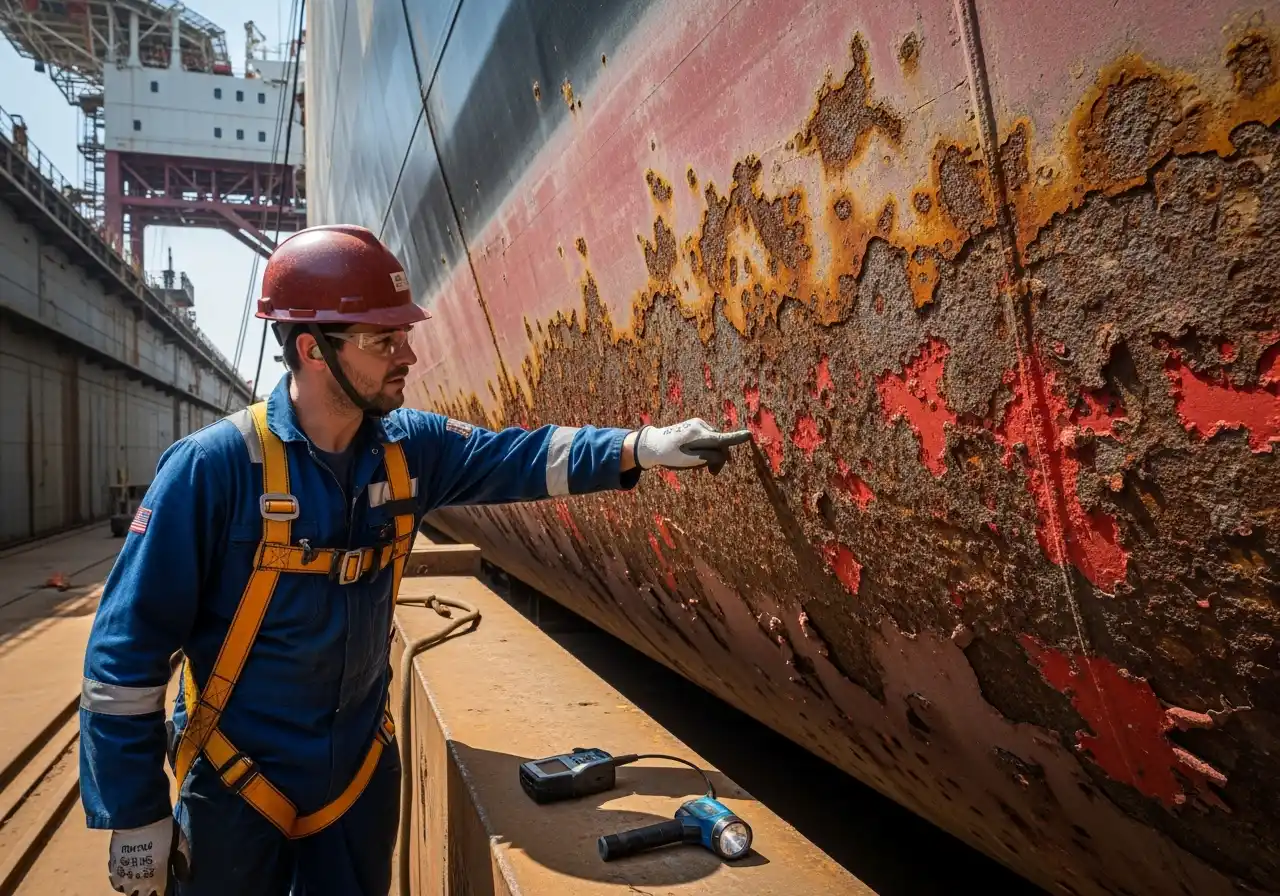
Corrosion inevitably attacks your FPSO hull throughout its operational life, with four primary manifestations: general corrosion spreading uniformly across plate surfaces; pitting creating deep, small-diameter holes; grooving forming localized straight corrosion between structural members; and weld metal corrosion from galvanic action. These processes significantly reduce structural strength at both local and global levels. After 25 years of service, hull strength can decrease by 16.2% in hogging conditions and 14.96% in sagging conditions. Nonetheless, pitting corrosion proves considerably more destructive, reducing ultimate strength by approximately 32% relative to intact conditions.
Topside Equipment Failures from Thermal Cycling
Topside processing equipment undergoes significant thermal stress cycles that accelerate material fatigue. In double-hulled FPSOs, cargo temperatures can reach 20°C higher than in single-hulled vessels, intensifying corrosion processes. Additionally, topside areas remain highly susceptible to explosions and fires, with 56% of offshore operations involving gas leaks. This underscores the importance of robust fire suppression systems in FPSO vessels. Corrosion under insulation (CUI) often develops where thermal insulation traps moisture against piping, creating ideal conditions for accelerated localized corrosion, especially where protective coatings have deteriorated.
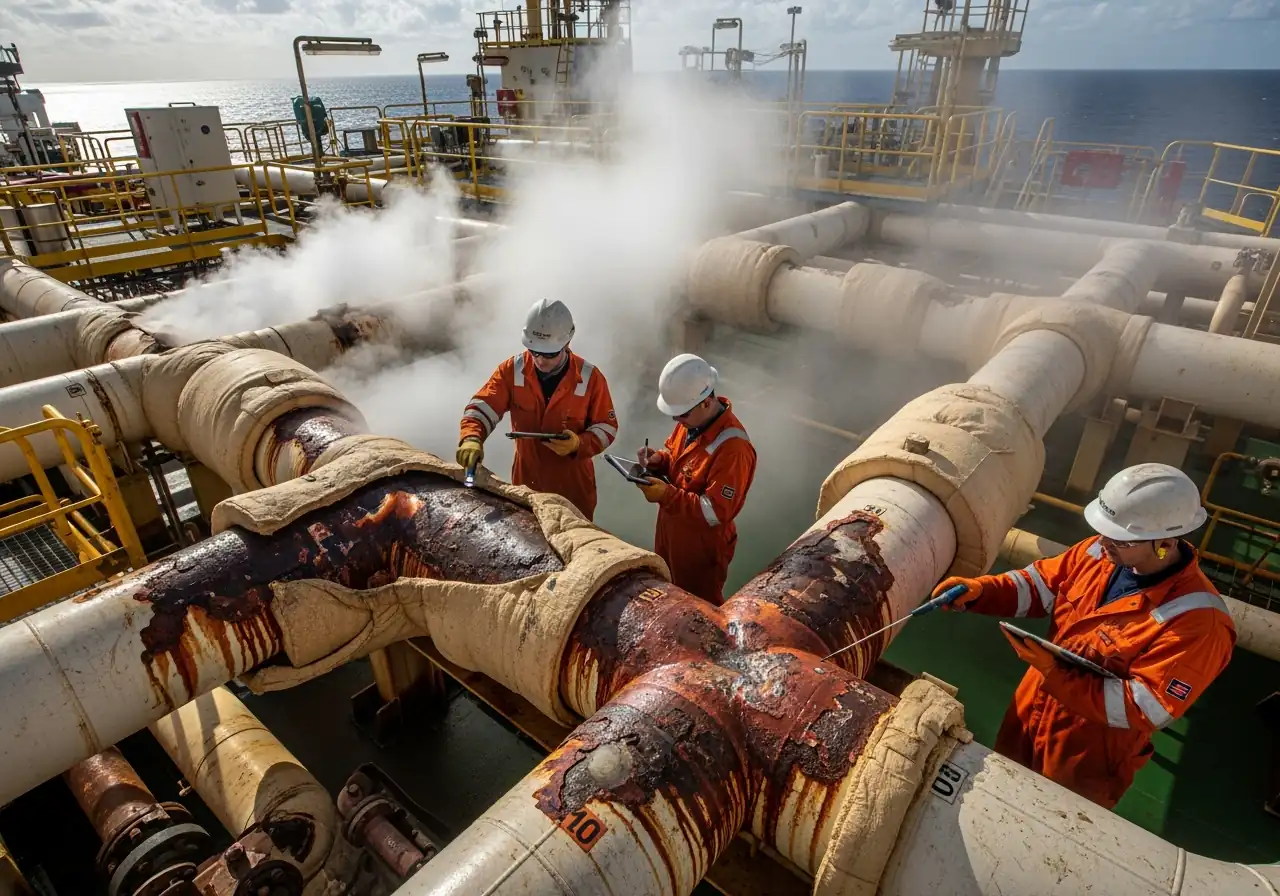
Mooring System Wear and Turret Misalignment
Mooring failures represent a persistent offshore challenge, with 21 documented cases between 2001-2011. Moreover, nine of these incidents involved multiple-line failures, creating catastrophic consequences. Bearing systems - key mechanical components transferring loads between earth-fixed and ship-fixed portions - often experience excessive wear from eccentric loading. This wear accelerates when supporting FPSO structures lack sufficient stiffness, amplifying stresses according to the cube rule. Subsequently, even small structural deficiencies can produce eight times the load on bearings.
Pipeline and Riser Integrity Breaches
External sheath damage remains the most common failure mode in flexible pipes, with incidents increasing since 2001. Meanwhile, water injection pipelines face significant threats from microbial-influenced corrosion (MIC), with typical corrosion rates reaching 2 mm annually. Studies of 23 pipelines revealed nine failures attributed to MIC, with an average service life of just 8 years. Therefore, comprehensive integrity monitoring becomes essential to detect these issues before they escalate into complete system failures, particularly in deepwater operations.
Inspection Checkpoints That Prevent Costly Failures
Regular inspection checkpoints form your first line of defense against catastrophic FPSO failures. Implementing structured inspection protocols detects issues at their earliest stages, long before they trigger costly shutdowns.
Daily and Weekly FPSO Inspection Checklist Essentials
Effective FPSO integrity management requires consistent monitoring routines. Weekly inspections should include observing the relative rotation between earth-fixed and vessel-fixed parts for at least 30 minutes to gain valuable insights into bearing system performance. Throughout these inspections, verify that grease is properly expelled from the turret, while checking fresh grease levels in pump drums to prevent running dry. For swivel systems, visual examination of main components, torque arms, and connections for general wear, loose connections, and external leakage signs is essential. Importantly, listening to swivel assemblies during vessel heading changes helps detect integrity issues - unusual sounds often indicate bearing or seal problems.
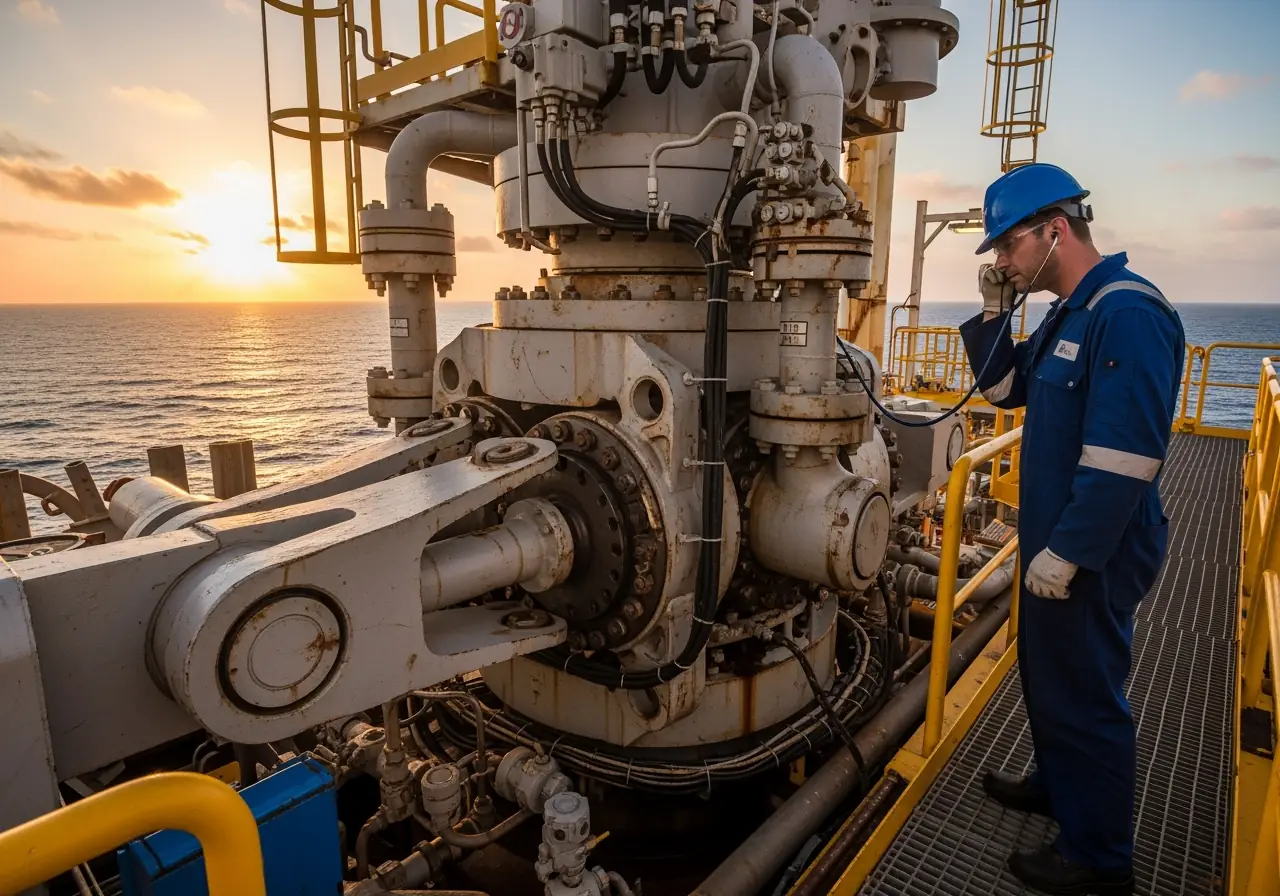
Critical Components Monitored by FPSO Inspection Equipment
Primary structural integrity concerns focus on mooring systems, where unexpected failures have occurred even on new facilities. Hence, monitoring the performance of anchor leg systems remains vital, as their primary function is maintaining safe offsets to ensure riser system integrity. Risk-based inspection (RBI) methods effectively develop in-service inspection programs for FPSO hull and topside structures, specifically regarding fatigue cracks. This approach prioritizes resources based on risk ranking of structural component groups. Additionally, emergency shutdown systems are crucial components that require regular monitoring to ensure operational readiness in critical situations.
Role of API and ISO Standards in Inspection Protocols
API has published 275 standards applicable to offshore oil and gas operations. Indeed, since 1924, API has been foundational in establishing standards for the worldwide oil and natural gas industry. These standards enhance operational safety and environmental protection while gaining acceptance from regulators due to their technical rigor and third-party accreditation. Intermediate survey requirements, as outlined in these standards, play a crucial role in maintaining FPSO vessel integrity between major inspections.
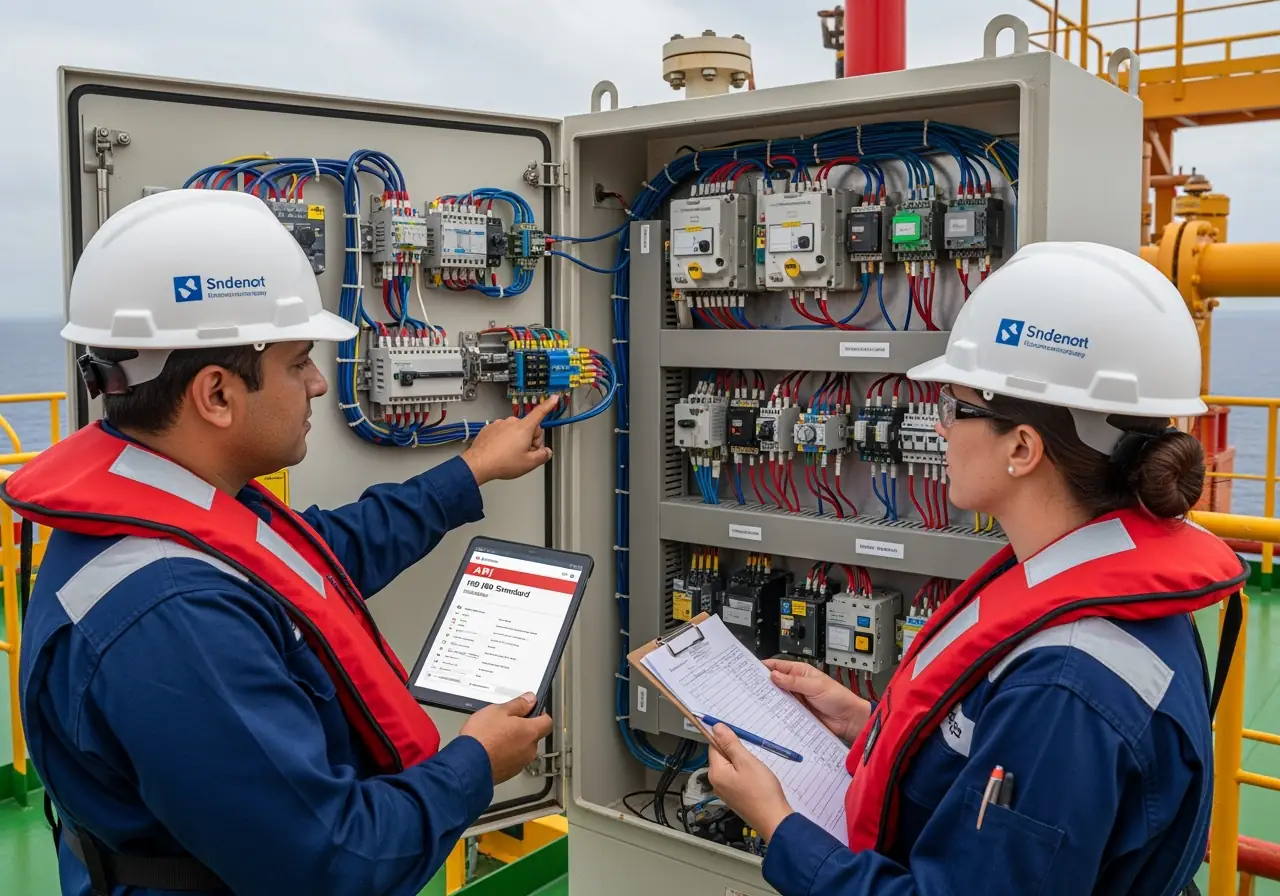
Visual vs NDT Methods in Offshore Inspections
Visual inspection serves as the fundamental starting point for identifying surface discontinuities. Still, Non-Destructive Testing (NDT) techniques offer deeper evaluation without causing damage. NDT methods include ultrasonic testing, radiography, magnetic particle testing, and liquid penetrant testing - each detecting defects invisible to the naked eye. Unlike visual inspection, NDT can assess component integrity throughout entire volumes, making it crucial for detecting internal flaws.
Spare Parts Strategy to Minimize Downtime
Strategic spare parts management forms the backbone of effective FPSO downtime prevention. A well-structured approach reduces unexpected shutdowns that can cost millions in lost production and repairs.
Offshore Spare Parts Planning for Critical Systems
Critical spare parts differ fundamentally from operational spares, as they prevent prolonged shutdowns despite having lower failure rates. For FPSOs, these components primarily focus on HVAC systems and fire/gas detection equipment - both essential for personnel safety. Ultimately, their absence during failure creates significant safety risks and financial impacts on operations.
Predictive Parts Ordering Based on Inspection Data
Integrating computerized maintenance management systems (CMMS) with inventory software enables real-time tracking of spare parts usage and automated reordering processes. This approach forecasts which components need replacement soon, thereby reducing downtime by up to 40% among vessels using predictive inventory systems.
Blueprint for FPSO Spare Kits by Equipment Type
Categorize spare parts by equipment type, focusing on:
- HVAC components with 100% redundancy
- Control fuses rather than costly breakers
- LED lighting to reduce bulb replacement frequency
Vendor Qualification for Long-Lead Components
Although specialized offshore components often face supply chain hurdles, early engagement with fluid system providers (pre-FEED if possible) helps secure appropriate parts that adhere to project timelines. Rather than risking delays, establish relationships with suppliers who can create asset registries of every product on your vessel.
Offshore Parts Inventory Control Best Practices
Implement standardized naming conventions for spare parts cataloging alongside minimum/maximum stock levels for each component. Consider reaching out to MCH Parts for a free sourcing machinery or parts consultation, ensuring your business benefits from top-tier equipment and service. Despite limited offshore storage, regular inventory audits help discard obsolete items while maintaining critical spares.
Cost Avoidance Through Predictive Maintenance
Predictive maintenance dramatically reduces FPSO operational costs by detecting problems before they escalate into million-dollar failures. Effectively shifting from reactive to proactive approaches provides tangible financial benefits across your offshore operations.
How Predictive Maintenance Prevents FPSO Equipment Failure
By utilizing real-time monitoring and data analytics, predictive maintenance enables early identification of potential issues. This approach has helped operators reduce equipment failures by 30% coupled with a 25% decrease in maintenance costs. Shell's predictive platform can forecast failures up to 60 days in advance, effectively reducing downtime by 80%.

Integrating Inspection Data with CMMS Systems
Combining inspection software with computerized maintenance management systems creates powerful predictive capabilities. This integration allows for optimization of maintenance schedules based on actual equipment conditions. In essence, this approach helped one operator achieve a 40% reduction in work order backlog, enabling maintenance teams to focus on critical tasks.
Case Example: Avoiding $30M Loss via Early Detection
Offshore organizations experience approximately 27 days of unplanned downtime annually, costing up to $38 million. Organizations implementing predictive approaches report annual savings of $34 million plus a 36% reduction in downtime. Consider reaching out to MCH Parts for a free sourcing machinery or parts consultation, ensuring your business benefits from top-tier equipment and service.
Linking RBI with Offshore Asset Reliability Engineering
Risk-Based Inspection methodologies, following DNV-RP-G101 standards, form the foundation for comprehensive asset integrity management. As shown in multiple case studies, this approach yields a 10:1 return on investment over total asset life.
Conclusion
FPSO inspection protocols are the frontline defense against catastrophic offshore failures that can cause million-dollar losses. Even minor issues like hull corrosion, topside equipment fatigue, mooring system wear, and pipeline integrity breaches can escalate into full production shutdowns without early detection. Adhering to API and ISO inspection standards, supported by risk-based inspection, extends asset lifespan and reduces operational risk. Strategic spare parts management - categorizing critical components, predictive ordering, and optimized inventory control - minimizes downtime and ensures rapid response to failures.
Predictive maintenance enhances this strategy, forecasting failures up to 60 days ahead, reducing downtime by 80% and maintenance costs by 25%, with annual savings exceeding $34M. The ROI is clear: proactive FPSO inspection, strategic parts planning, and predictive maintenance safeguard production, protect crews, and preserve profitability.
Secure your offshore reliability today - visit MCH Parts for expert FPSO parts sourcing and inspection support.
Key Takeaways
Strategic FPSO inspection and maintenance protocols can prevent catastrophic failures that cost operators up to $36 million per unplanned shutdown, making proactive monitoring essential for offshore profitability.
• Implement structured daily and weekly inspection routines focusing on hull corrosion, mooring systems, and topside equipment to catch failures before they cascade into shutdowns.
• Develop predictive spare parts strategies using CMMS integration and equipment-specific inventory planning to reduce emergency downtime by up to 40%.
• Adopt predictive maintenance technologies that can forecast equipment failures 60 days in advance, reducing downtime by 80% and maintenance costs by 25%.
• Follow API and ISO inspection standards combined with risk-based inspection (RBI) methodologies to achieve 10:1 return on investment over asset lifetime.
• Monitor critical failure chains systematically including hull structural fatigue, thermal cycling damage, mooring wear, and pipeline integrity breaches that commonly trigger costly shutdowns.
The shift from reactive to predictive maintenance represents a transformational opportunity, with leading operators reporting annual savings exceeding $34 million through early detection and strategic intervention before minor issues become million-dollar problems.
FAQs
Q1. What are the main benefits of regular FPSO inspections? Regular FPSO inspections help detect potential issues early, prevent costly shutdowns, extend asset lifespan, and ensure crew safety. They can save operators millions of dollars by identifying problems before they escalate into major failures.
Q2. How often should FPSO inspections be conducted? FPSO inspections should be conducted on a daily and weekly basis. Daily checks focus on critical systems, while more comprehensive weekly inspections cover structural integrity, equipment performance, and safety systems. Additionally, intermediate survey requirements as outlined by industry standards should be followed.
Q3. What role do spare parts play in FPSO maintenance? Strategic spare parts management is crucial for minimizing downtime. It involves categorizing components by criticality, implementing predictive ordering systems, and maintaining proper inventory control to quickly address equipment issues when they arise.
Q4. How does predictive maintenance benefit FPSO operations? Predictive maintenance can forecast equipment failures up to 60 days in advance, reducing downtime by up to 80% and cutting maintenance costs by 25%. This approach has helped operators save over $34 million annually and significantly reduce unplanned downtime.
Q5. What are the key areas to focus on during FPSO inspections? Key areas to focus on during FPSO inspections include hull corrosion, topside equipment stress, mooring systems, pipeline integrity, fire suppression systems, and emergency shutdown systems. Regular monitoring of these critical failure points allows for early detection of issues before they escalate into major problems, especially in deepwater operations.
Read More
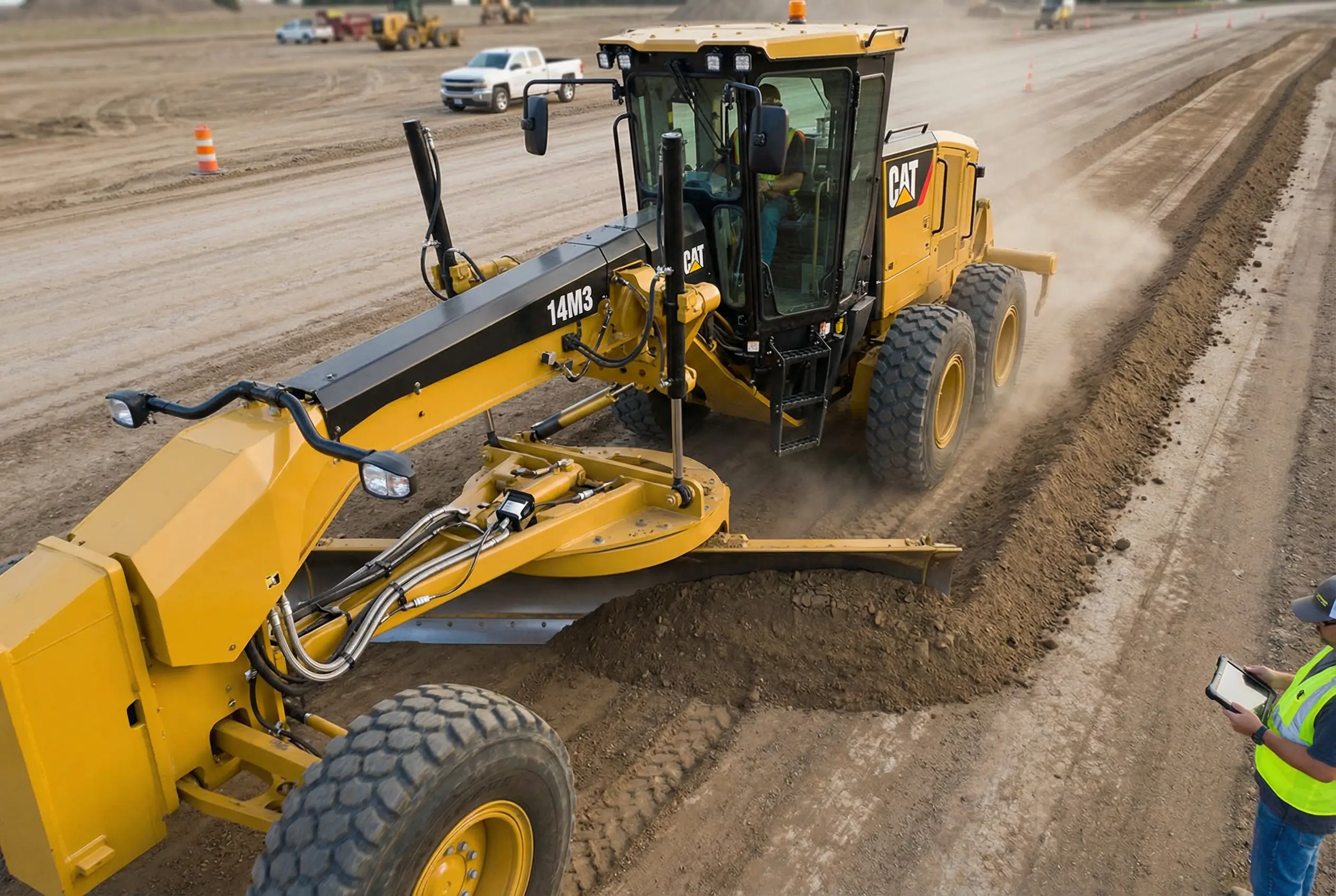
Motor Grader Predictive Diagnostics: Prevent Hydraulic Failures & Reduce Downtime

Pesticide Sprayer Calibration: Essential Safety Compliance Guide & Protection

Seeder Bearing Parts Sourcing Guide: Critical Components & Strategy

Downtime Prevention Through Smart Inventory for Grain Dryers

Combine Harvester Breakdown Prevention Guide: Predictive Analytics for Zero Downtime

Master Global Agricultural Parts Delivery | Mid-Season MRO Guide

Fixing Haul Truck Downtime Issues: Remote Parts Strategy Guide 2025

Blasting Equipment Safety Compliance: Must-Know Audit Requirements for 2025

The Step-by-Step Guide to Global Drill Rig Consumables Sourcing

Mining Conveyor Maintenance Guide: Detecting Hidden Risks in Underground Systems
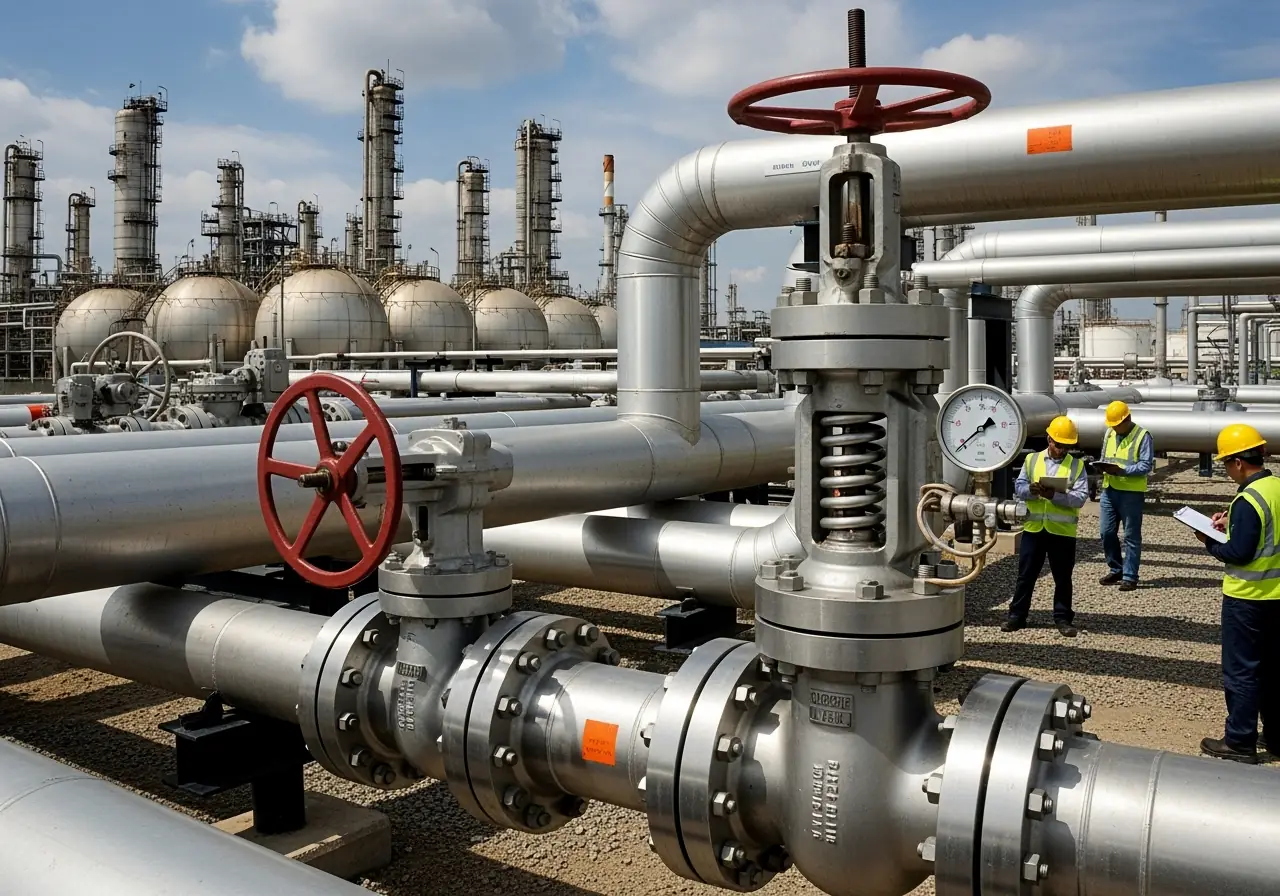
Best Practices for Certified Pipeline Valve Selection: From Specs to Installation

Optimizing Oil Rig PPE Delivery: Proven Strategies That Saved $2M Annually
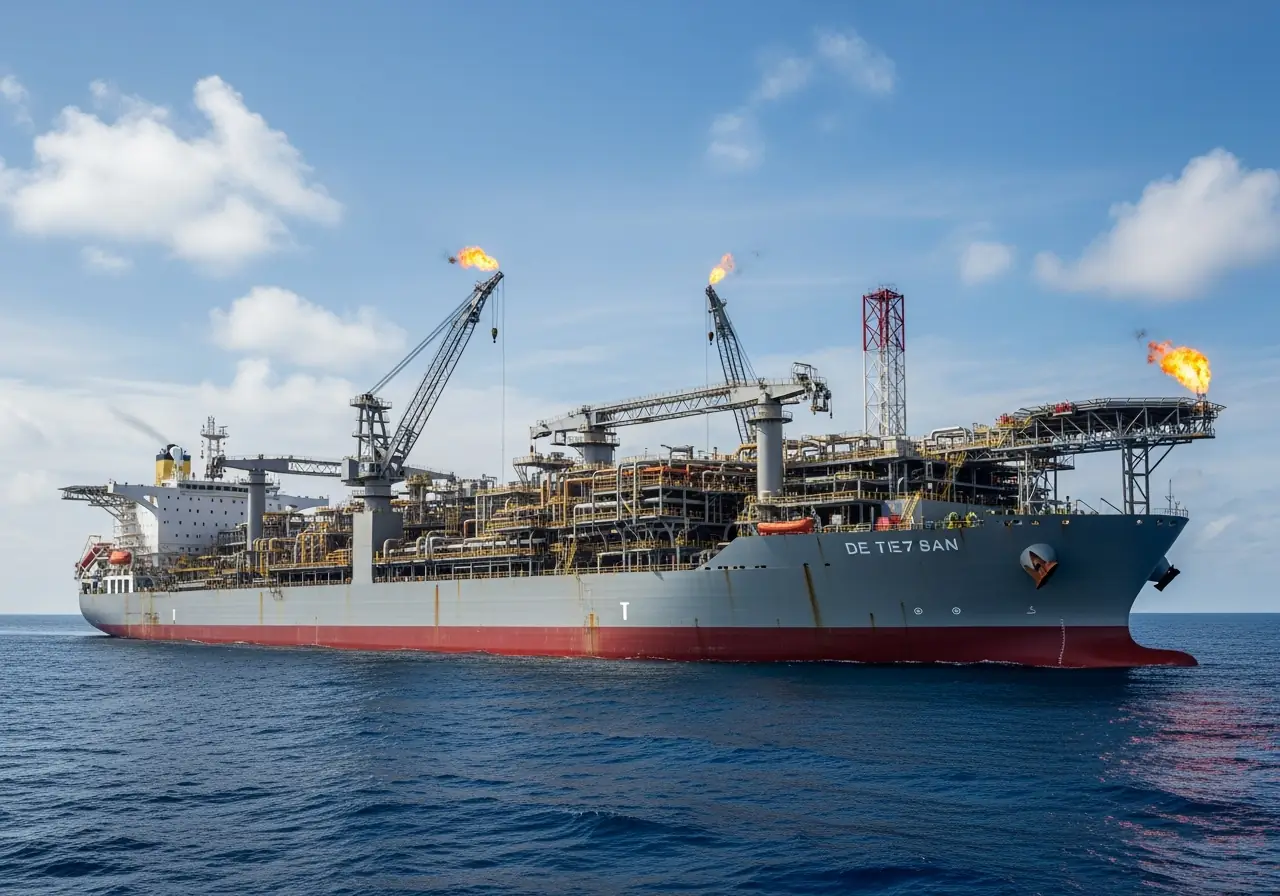
FPSO Smart Parts Planning: Proven Methods to Cut Downtime

How FPSO Inspection Prevents Million-Dollar Shutdown Losses

Fix It Before It Breaks: A Farmer's Guide to Combine and Harvester Maintenance

Why Fast Tractor Parts Delivery is Changing Modern Farming [2025 Guide]

The Critical Farm Equipment Replacement Parts You Need Before Harvest 2025
.webp)
How to Double Your Farm Efficiency: Expert Guide to Smart Scaling

Cut Costs by 30%: Pre-Season Spare Parts Audit Checklist

Proven Success Factors for Agricultural Equipment Manufacturers in 2025

13 Overlooked Farm Spare Parts That Halt Operations — Pt. 2

13 Overlooked Farm Spare Parts That Halt Operations — Pt. 1

Top Hydraulic Components for Agricultural Equipment in 2025: Complete Guide

The Essential Farm Equipment Parts You Can't Afford to Run Out Of

How to Service Farm Equipment: A Farmer's Guide to Zero Harvest Downtime

Construction Machinery Parts Suppliers: Expert Selection Guide

How to Apply Machine Safety Rules: From Selection to Installation

Smart Diagnostics Cut Heavy Equipment Failures by 73%

5 Ways to Assess the Environmental Impact of Heavy Construction Machinery

10 Smart Ways to Pick Construction Machinery for 2025 Projects

Rent vs Purchase Equipment: What Heavy Industry Experts Hide

How to Implement a Construction Inventory Management System for Equipment Efficiency

How to Extend Equipment Life Expectancy with Regular Maintenance

Advanced Heavy Equipment Diagnostic Tools: Ensuring Construction Machinery Quality
Essential Features Your Construction Equipment Inventory System Needs
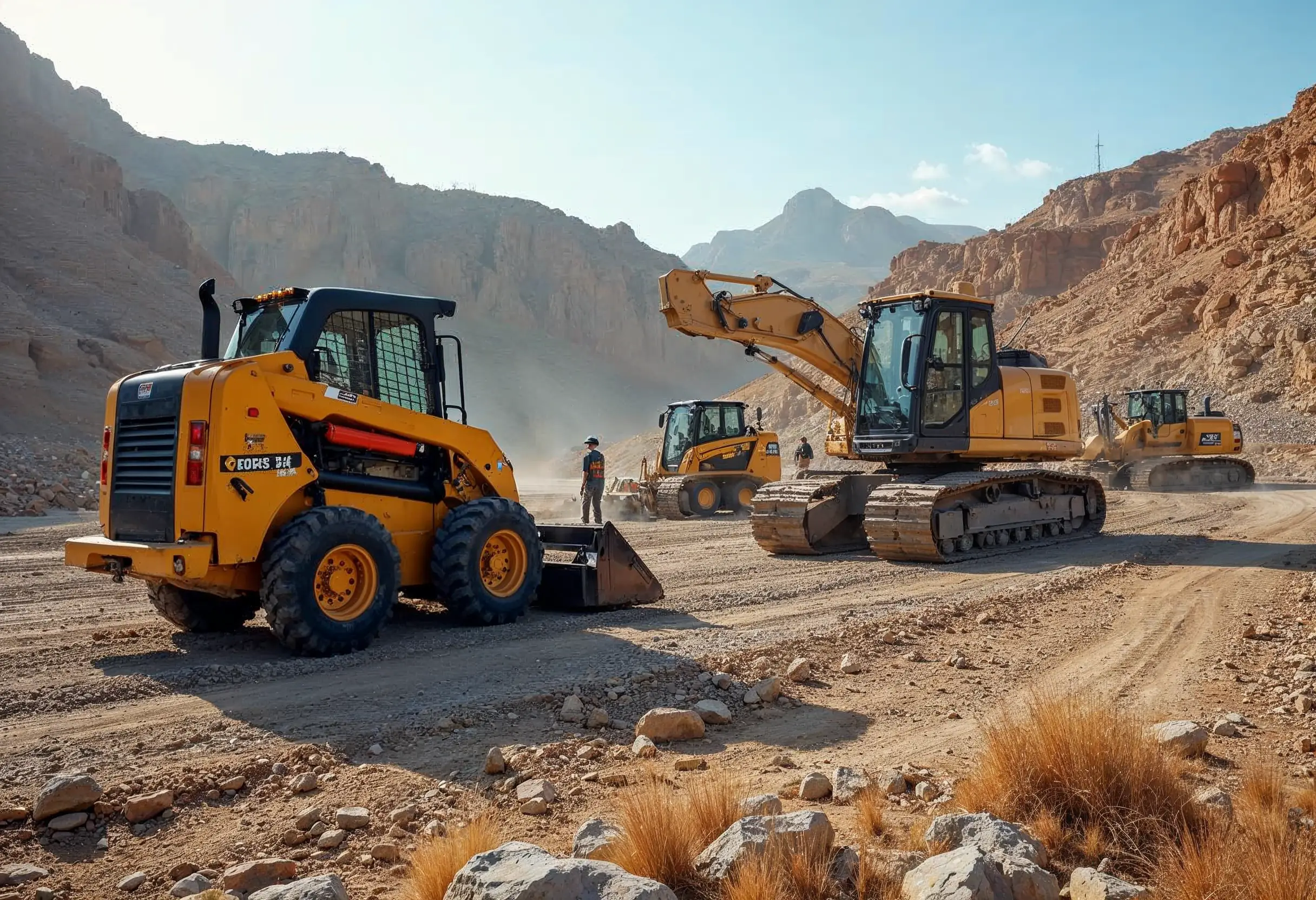
29 Quick Tips for Choosing Construction Equipment for Remote Locations

How to Select Construction Machinery with Optimal Equipment Maintenance in Mind

Top 25 Tips for Selecting Bulldozers for Construction Sites

Which Construction Loader is Best for Your Project Needs?

4 Key Steps to Form a Construction Machinery QC Team

15 Essential Tips for Selecting the Perfect Crane for Construction

Maximize Savings: Multi-Purpose Construction Machinery for Lower Costs

Affordable Heavy Equipment Parts: A Sourcing Guide

Choosing the Right Road Construction Equipment: A Complete Guide

Motor Graders: Key Elements to Consider for Optimal Selection

A Detailed Guide to Choosing Excavators for Construction Work

Top Tips for Choosing Cranes for Construction Projects
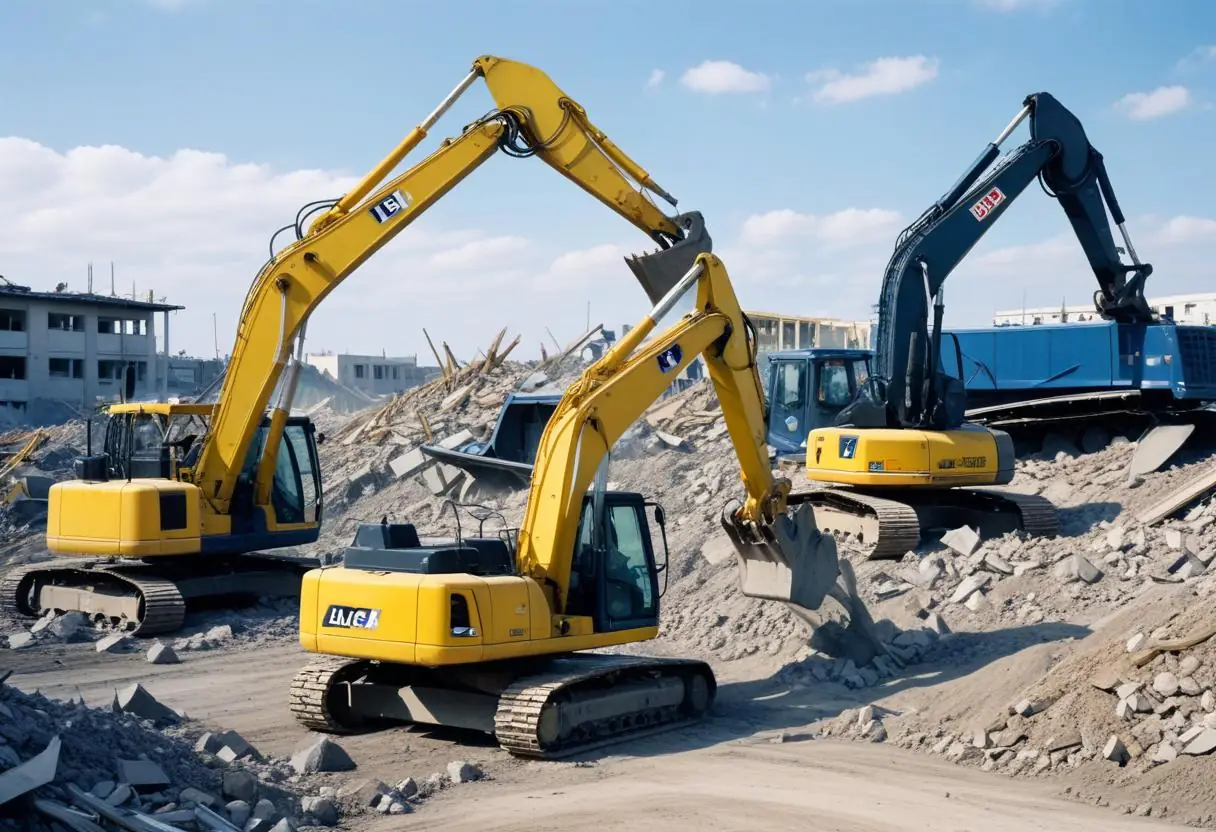
5 Top-Rated Demolition Machines for Construction Professionals

Expert Tips on Choosing Earthmoving Equipment for Large Projects

Top Functional Criteria for Selecting Heavy Construction Equipment

Construction Machinery: Detailed Guide to Equipment Specifications

Heavy Machinery Prices: Key Factors in Cost and Quality Balance

Best Construction Heavy Equipment Brands: Pros and Cons

Construction Site Equipment: How to Determine Your Requirements

Maximizing Safety: Risk Management for Construction Projects

Innovations in Construction: Transforming Machinery and Equipment

Heavy Equipment Safety: Beyond the Basics in Construction Compliance

The Essential Handbook for Construction Equipment Repair and Maintenance

How to Efficiently Source Oil and Gas Machinery Parts in NYC

Essential Guide to Sourcing Agriculture Equipment Parts

How to Source Mining Machinery Parts: Tips and Strategies
